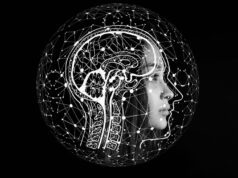A new paper published by a joint US and Canadian team in PLOS One suggests SPECT (single photon emission computed tomography)—a functional brain imaging modality that produces images of blood flow to the brain, showing areas of over or under-activity—is useful in both identifying and guiding treatment for those with traumatic brain injuries.
Using standardised search criteria, the study examined the National Library of Medicine’s largest research databases to identify1600 papers on SPECT and traumatic brain injury from the world literature over the past 30 years. Of these, 71 studies, involving 2634 patients, were considered of the highest quality and were included in the review. Nineteen studies followed traumatic brain injury patients over time and five looked at the effects of treatment interventions.
The findings of the systematic review include: 1) SPECT is more sensitive compared to standard anatomical CT and MRI in detecting brain abnormalities in traumatic brain injury; 2) SPECT correlates with psychological and neurological outcomes; 3) SPECT can be used to evaluate treatment interventions. SPECT scans showed abnormalities not seen on MRI and CT in all 10 of the studies that investigated this question (100%).
It was found that a normal SPECT study right after an injury is highly predictive of a good clinical outcome for patients, but an abnormal scan right after an injury was not highly predictive of the ultimate outcome (59%), as the brain has many healing mechanisms. But if the second scan three months later was also abnormal, the scan was highly predictive of poor outcome.
“The bottom line is if a brain SPECT is normal after traumatic brain injury, patients do well but we need to see at least two abnormal scans over time to see if they do poorly,” says psychiatrist and SPECT expert Daniel Amen, one of the co-authors of the paper. “These important findings can have important implications for diagnosis and brain rehabilitation in persons with traumatic brain injury.”
According to Theodore Henderson, a senior author on the study, “Persons with mild traumatic brain injury, which is often referred to as concussion or post-concussion syndrome, may not be properly identified as having credible neurological problems because commonly used anatomical CT or MRI scans in mild brain trauma are abnormal less than 10% of the time. These same patients may have recurring psychiatric symptoms such as depression, attention problems, and impulse control issues. Commonly, they are referred to psychiatrists who generally do not use neuroimaging to diagnose and treat brain disorders. Indeed, many cases of treatment-resistant depression turn out to have undiagnosed traumatic brain injury. Our study shows that SPECT can be useful and a true value-add in guiding diagnosis and treatment of such patients.”
“Ultimately, how would physicians ever know if the TBI was significant unless they ordered a functional imaging study like SPECT?” says Amen. “Our paper shows that brain SPECT can provide answers that may guide diagnosis and treatment of patients with Traumatic Brain Injury.”










